Here you will find news related to MaTeLiS. If you, as a member of the Materials Center, have a news article or publication which you would like to be linked to, please feel free to contact us.
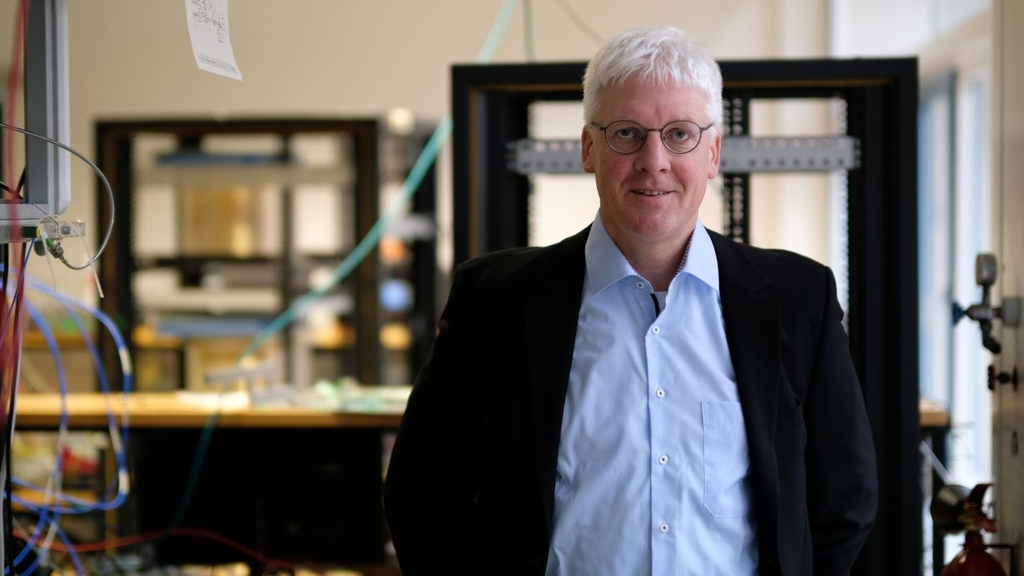
Für seine bahnbrechenden Forschungen für optische Hochleistungsnetze erhält Professor Christian Koos vom Karlsruher Institut für Technologie (KIT) den Karl Heinz Beckurts-Preis 2025. Der Elektroingenieur entwickelt neue Technologien, mit denen sich große Datenmengen schneller und energieeffizienter übertragen lassen – etwa in Rechenzentren oder beim Training von Künstlicher Intelligenz (KI). Seine Forschung macht digitale Infrastruktur klimafreundlicher. Viele seiner Erfindungen werden schon in der Praxis angewendet.
Read Article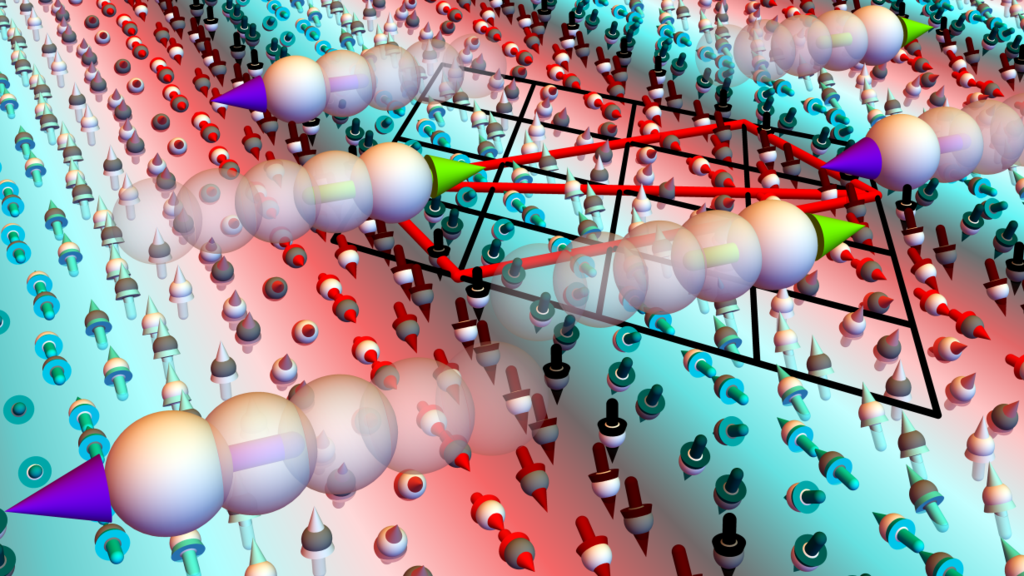
Ein neuartiges magnetisches Material mit ungewöhnlicher elektronischer Struktur könnte künftig schnellere, kleinere und effizientere Computerchips ermöglichen: der p-Wellen-Magnet. An seiner Herstellung waren Forschende des Karlsruher Instituts für Technologie (KIT) beteiligt. Sein magnetisches Verhalten im Innern des Materials entsteht, weil sich die Spins der Elektronen wie eine Spirale anordnen. Dadurch wird durchfließender elektrischer Strom seitlich abgelenkt.
Nature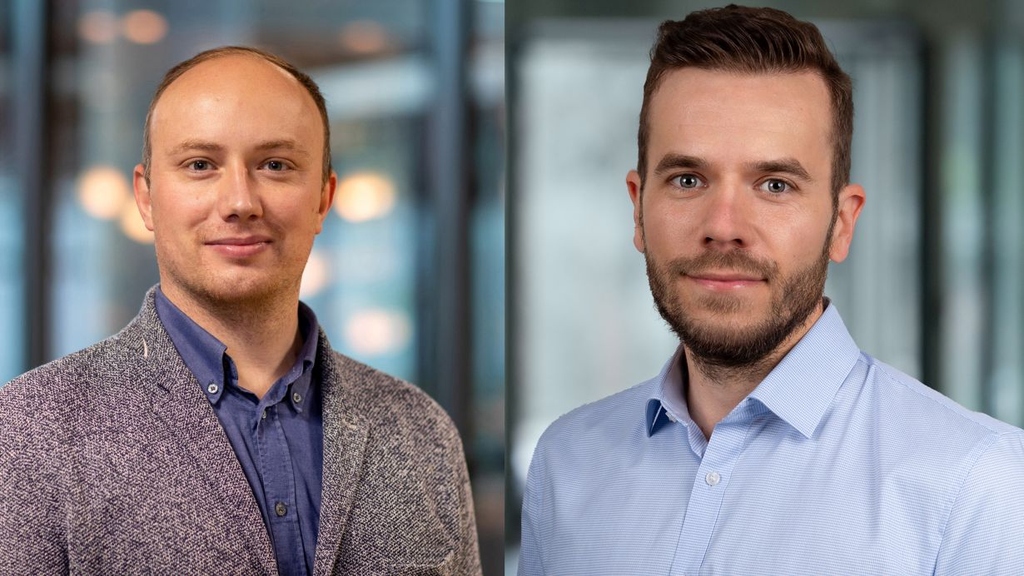
Zwei Nachwuchswissenschaftler des Karlsruher Instituts für Technologie (KIT) haben mit ihren Projekten die Gutachterinnen und Gutachter der Carl-Zeiss-Stiftung überzeugt. In den kommenden fünf Jahren können sie im Programm „CZS Nexus“ eine eigene Forschungsgruppe am KIT aufbauen. Dafür stehen ihnen jeweils rund 1,5 Millionen Euro zur Verfügung. Boris Karanov entwickelt neue Algorithmen zur digitalen Signalverarbeitung in optischen Kommunikationssystemen und Frank Rhein erforscht, wie sich die CO2-Emissionen von Kryptowährungen durch physische Prozesse reduzieren lassen.
Read Article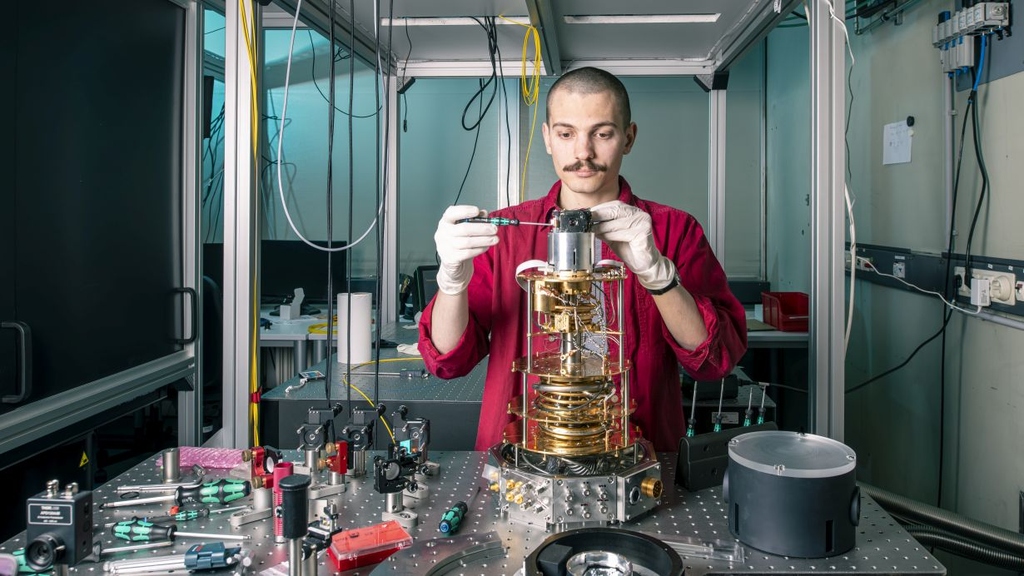
Sichere Kommunikation und digitale Souveränität in Europa – dafür sind Quantennetzwerke eine entscheidende Schlüsseltechnologie. Eine wichtige Grundlage dafür schaffen Forschende des Karlsruher Instituts für Technologie (KIT) gemeinsam mit europäischen Partnern, indem sie einen supraleitenden Quantencomputer mit einem spinbasierten Quantenspeicher vernetzen. Damit bringen die Forschenden leistungsstarke Quantentechnologien einen entscheidenden Schritt voran. Der Europäische Innovationsrat fördert das Projekt innerhalb des Pathfinder-Programms.
Read Article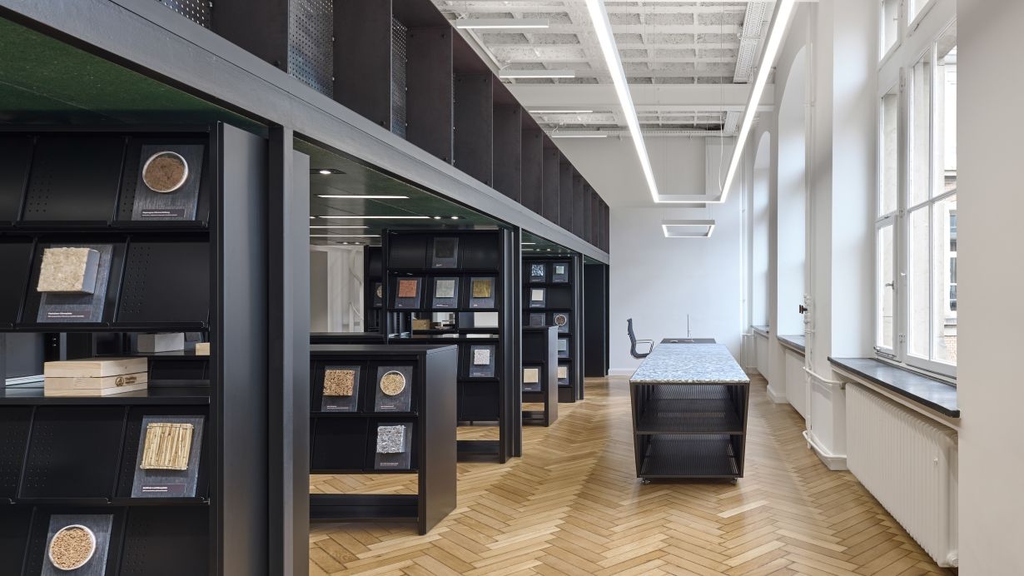
With the launch of a digital counterpart, the materials library of the Department of Architecture at Karlsruhe Institute of Technology (KIT) is now also available online. The website boasts comprehensive information ranging from the origin of raw materials and their life cycle to possible applications of each material in architecture. In addition, it features high-quality photos and manufacturer-independent data sheets. The new Materials Database is integrated into the national “Materials Library of German Universities” network, which was co-initiated by KIT.
Read Article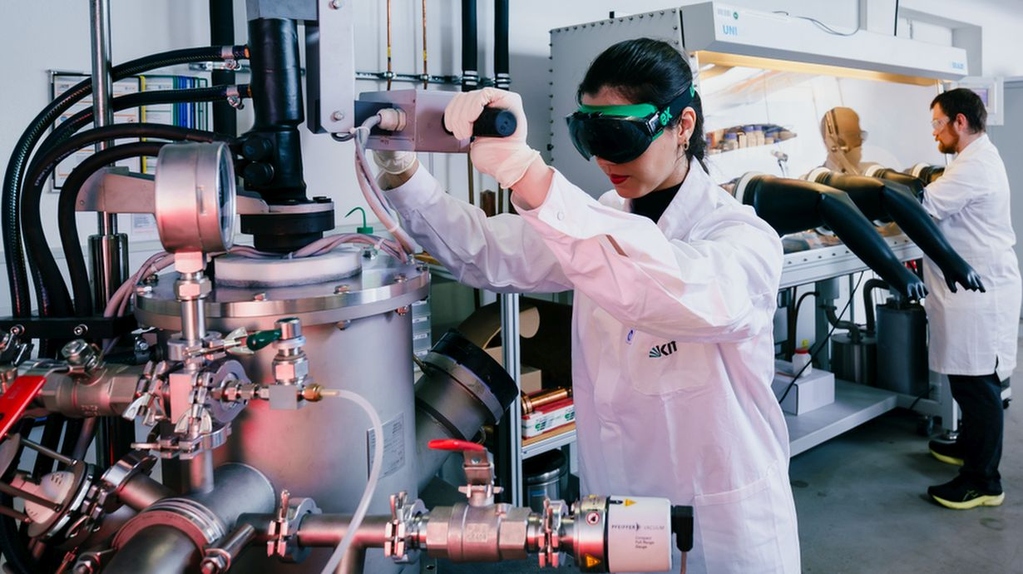
A new material might contribute to a reduction of the fossil fuels consumed by aircraft engines and gas turbines in the future. A research team from Karlsruhe Institute of Technology (KIT) has developed a refractory metal-based alloy with properties unparalleled to date. The novel combination of chromium, molybdenum, and silicon is ductile at ambient temperature. With its melting temperature of about 2,000 degrees Celsius, it remains stable even at high temperatures and is at the same time oxidation resistant.
Nature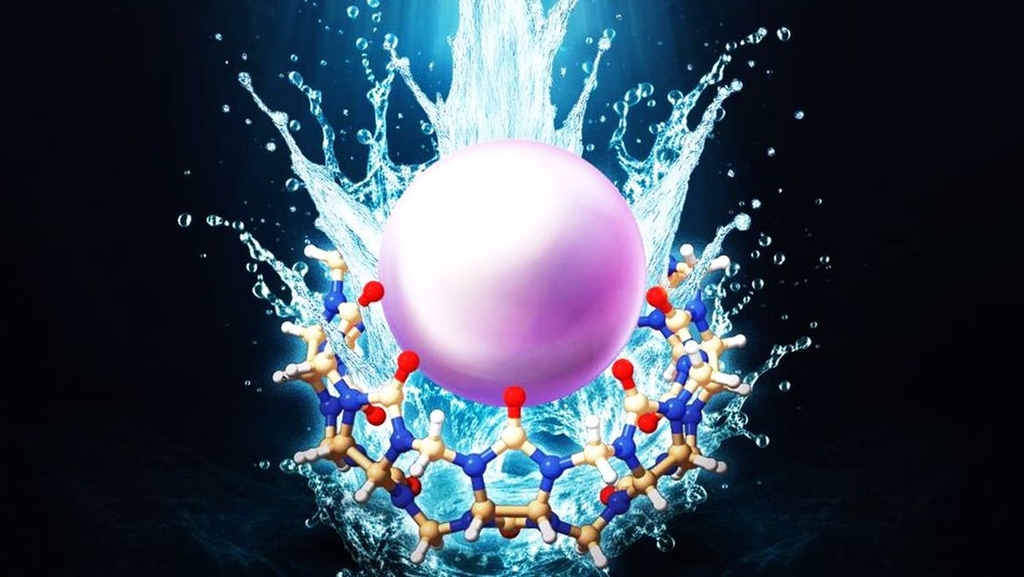
Wasser ist überall – es bedeckt den Großteil der Erde, zirkuliert im menschlichen Körper und ist selbst in den kleinsten molekularen Nischen zu finden. Doch was passiert, wenn Wasser nicht frei fließt, sondern in solchen Strukturen eingeschlossen ist? Forschende des Karlsruher Instituts für Technologie (KIT) und der Constructor University in Bremen haben erstmals nachgewiesen, dass „eingesperrtes“ Wasser sein Umfeld beeinflussen und die Bindung zwischen Molekülen verstärken kann. Diese Erkenntnis könnte neue Wege für die Entwicklung von Medikamenten und Materialien eröffnen.
Read Article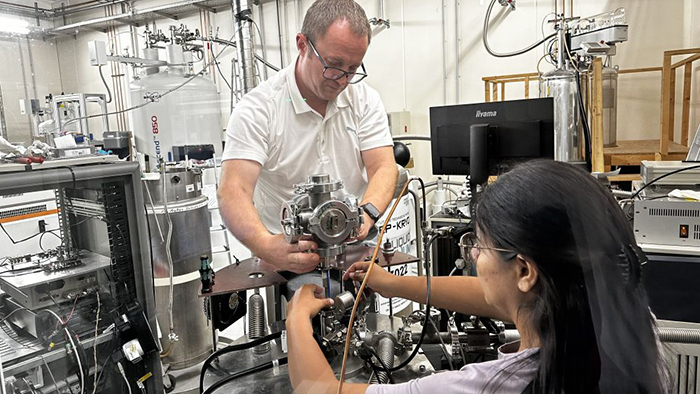
Nuclear magnetic resonance forms the basis of both nuclear magnetic resonance spectroscopy (NMR spectroscopy), which is used to analyze solids or organic molecules in liquids, and magnetic resonance imaging for medical diagnostic purposes. Researchers at Karlsruhe Institute of Technology (KIT) and Leipzig University have now, for the first time, experimentally demonstrated that extended measurement techniques are possible.
Read Article
Materials science is a key discipline for numerous forward-looking initiatives, whether in the energy transition, 3D printing, or quantum computing. Since 2019, the MaterialDigital platform, coordinated primarily by Karlsruhe Institute of Technology (KIT), has been advancing the digitalization of materials science with the goal of systematizing and standardizing the management of materials data. Starting in October 2025, the collaborative project funded by the German Federal Ministry of Education, Research and Technology (BMFTR) will enter its third funding phase.
Read Article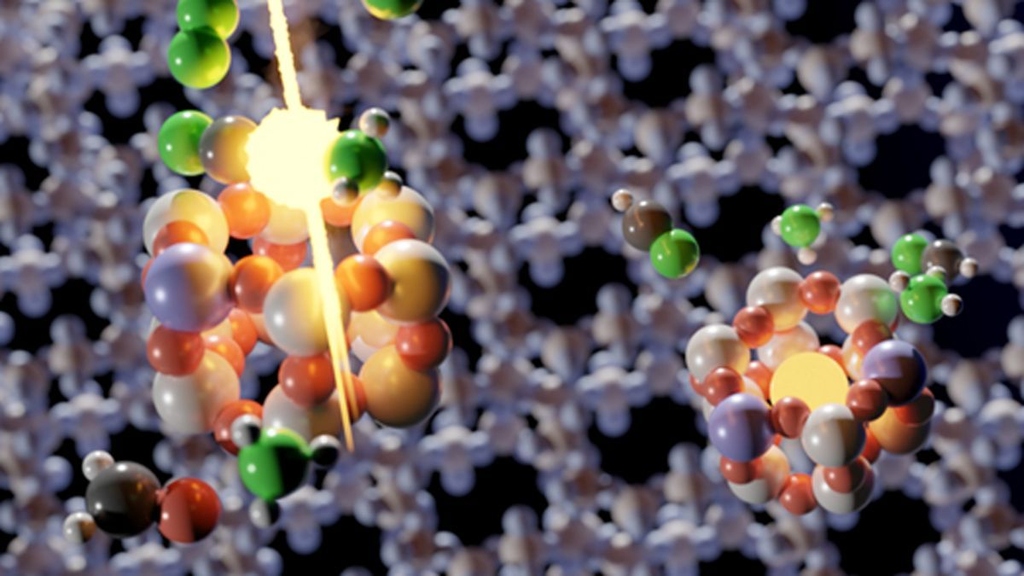
Synthetic fuels are considered climate-friendly when they are produced using biogenic or atmospheric CO₂. However, their combustion also generates pollutants such as formaldehyde. Despite low concentrations, these compounds are not only harmful to health, they also impair the effectiveness of traditional emission control systems. In addition, formaldehyde promotes the formation of secondary emissions such as highly toxic hydrogen cyanide. Together with partners, researchers at the Karlsruhe Institute of Technology (KIT) have optimized an established catalyst to reduce these harmful emissions.
Read Article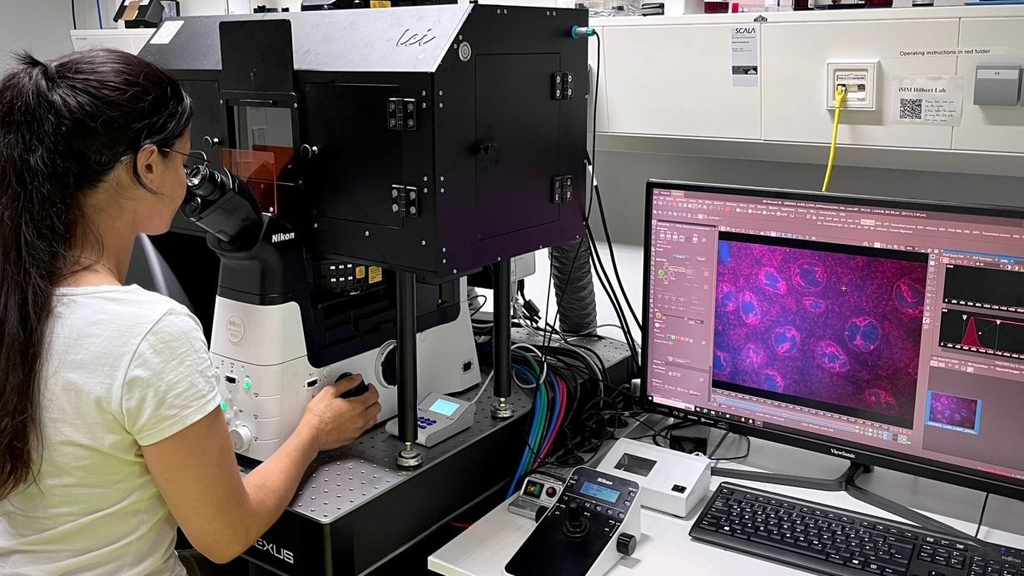
In the human body, stem cells process genetic information in an exceptionally reliable and very fast manner. To do this, they specifically access certain sections of the DNA in the cell nucleus. Researchers at Karlsruhe Institute of Technology (KIT) have investigated how the DNA-based information processing system works. Their results show that this process is comparable to processes in modern computers and could therefore serve as a model for new types of DNA-based computer chips. Published in “Annals of the New York Academy of Sciences.”
Read Article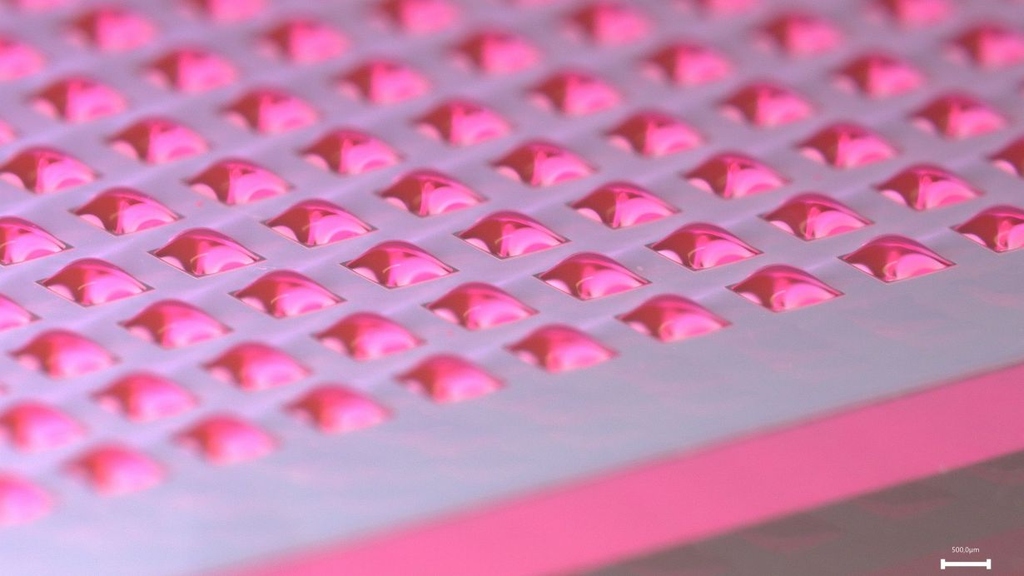
Until now, the early phase of drug discovery for the development of new therapeutics has been both cost- and time-intensive. Researchers at KIT (Karlsruhe Institute of Technology) have now developed a platform on which extremely miniaturized nanodroplets with a volume of only 200 nanoliters per droplet – comparable to a grain of sand – and containing only 300 cells per test can be arranged. This platform enables the researchers to synthesize, characterize, and test thousands of therapeutic agents on the same chip, saving time and resources.
Read Article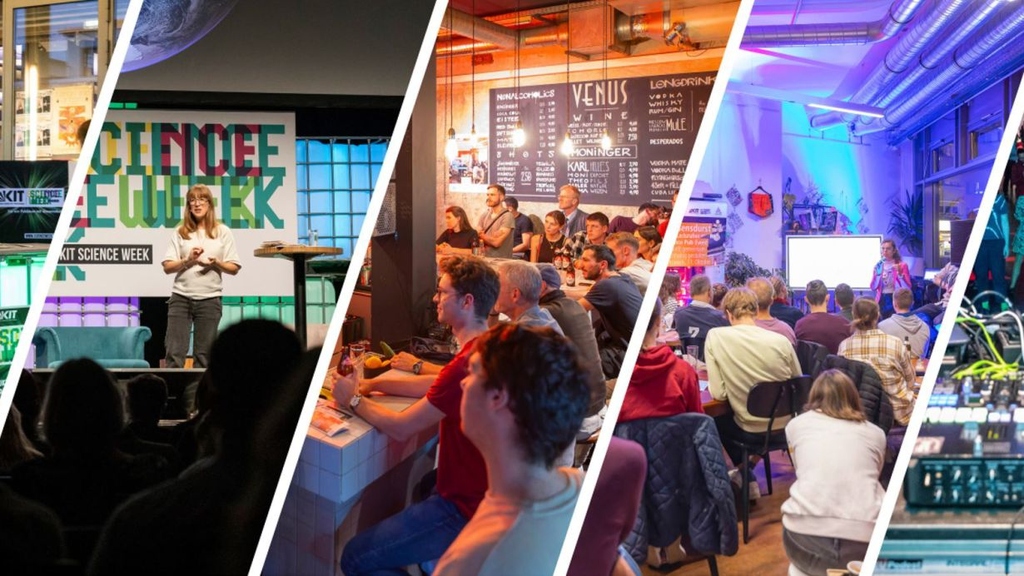
Smart cities, urban planning and architecture, sustainability, energy supply, mobility, and digitalization: In the course of the 200th anniversary of Karlsruhe Institute of Technology (KIT), KIT Science Week goes into the third round, this year themed “City of the Future.” From October 14 to 19, 2025, it’s time once again to Engage! Participate! Research! Over 100 events will take place all over Karlsruhe. More than half of these events are specifically geared to children, adolescents, families, and school classes.
Read Article
The visual diversity of the film unfolds from the topics of the following KIT Centers that funded it: Energy, Climate and Environment, Information | Systems | Technologies, Elementary Particle and Astroparticle Physics, Health Technologies, Materials in Technical and Life Sciences, Mobility Systems, and Humans and Technology. With the “Science for Impact” film, Karlsruhe Institute of Technology (KIT) contributes to the 2025 Schlosslichtspiele Light Festival held from August 14 to September 14. The short feature film turns the baroque palace facade into a jungle, a futuristic city, and a vibrant surface, showcasing the broad range of research conducted at KIT. During the Light Festival, which has been established in 2015, Karlsruhe's palace becomes a giant screen for digital light art. Honoring KIT’s 200th anniversary, the 2025 event has been themed “The Shining Lights of Science.”
Read Article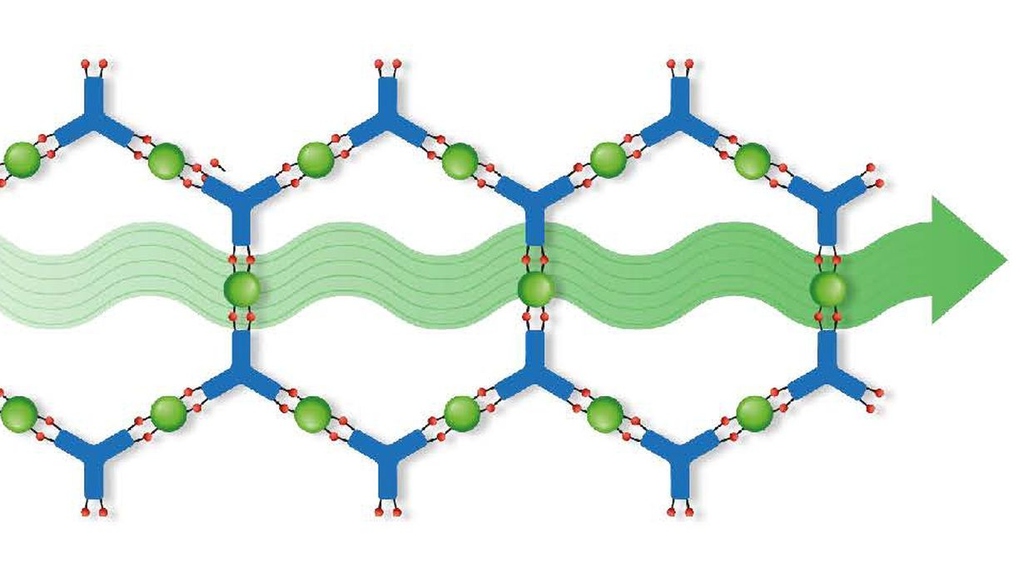
Metal-organic frameworks (MOFs) are characterized by high porosity and structural versatility. They have enormous potential, for example for applications in electronics. However, their low electrical conductivity has so far greatly restricted their adoption. Using AI and robot-assisted synthesis in a self-driving laboratory, researchers from Karlsruhe Institute of Technology (KIT), together with colleagues in Germany and Brazil, have now succeeded in producing an MOF thin film that conducts electricity like metals. This opens up new possibilities in electronics and energy storage – from sensors and quantum materials to functional materials.
Read Article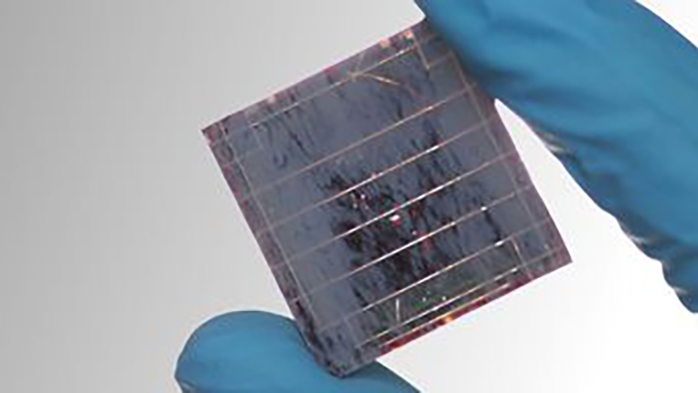
Perovskite Semiconductors and AI Are Driving the Development of Next-generation Solar Cells.
The work of a scientist and that of a detective are somewhat similar: Both search for evidence, analyze data, and follow up on clues to make groundbreaking discoveries. In KIT laboratories, researchers used this approach to develop a new technology that could revolutionize the photovoltaics market by increasing the efficiency of solar cells.
Read Article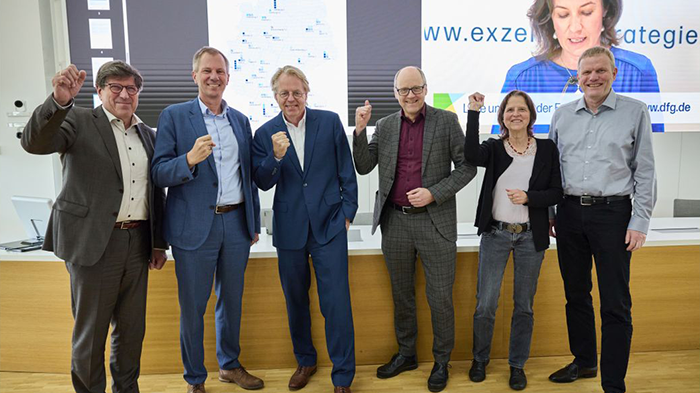
Karlsruhe Institute of Technology (KIT) has been successful with two approved proposals in the final of the Clusters of Excellence funding line that is part of the Excellence Strategy competition of the Federation and the States. Based on the review by international commissions, the international committee of experts appointed by the Joint Science Conference (Gemeinsame Wissenschaftskonferenz, GWK) and the federal and state ministers responsible for science and research have selected the Clusters on Battery Research and 3D Designer Materials for funding. The funding to be granted in the two central fields of science will provide space for cutting-edge research on the highest international level. The Clusters selected will be funded with up to EUR 70 million for seven years.
Read Article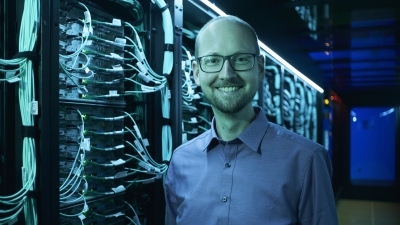
2025 geht derManfred-Fuchs-Preis an den Tenure-Track-Professor Dr. Pascal Friederich (KIT) für seine Arbeiten zur Nutzung von künstlicher Intelligenz in der Entwicklung neuer chemischer Materialien. Hintergrund sind die schier unendlich große Anzahl möglicher Materialien, die durch Kombination chemischer Stoffe gewonnen werden kann, und die große Relevanz von Materialien mit anwendungsspezifischen Eigenschaften.
Read Article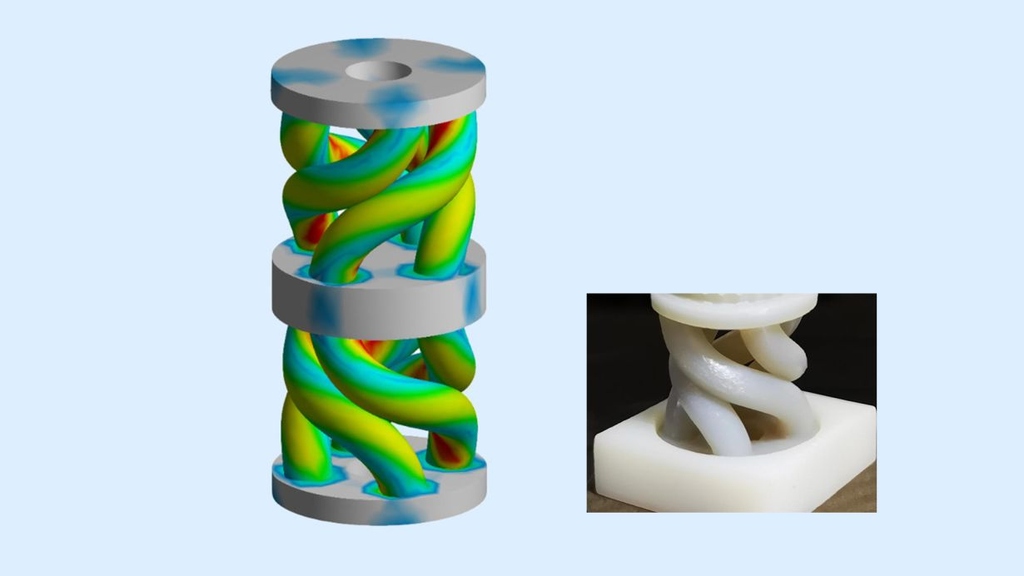
Mechanische Metamaterialien mit hoher elastischer Energiedichte hat ein am Karlsruher Institut für Technologie (KIT) koordiniertes internationales Team von Forschenden entwickelt. Dank stark verdrehter Stäbe, die sich spiralförmig verformen, weisen sie eine hohe Steifigkeit auf und können große Mengen elastischer Energie aufnehmen und wieder abgeben. Ihre zunächst theoretisch ermittelten Ergebnisse bestätigten die Forschenden durch einfache Druckexperimente.
Read Article
Be it sensors, cameras, or displays: Metasurfaces have the potential to fundamentally improve optical systems in our everyday lives. By controlling light more precisely, they drive compact, multi-functional solutions. At Hannover Messe, which starts on Monday, March 31, 2025, researchers from KIT (Karlsruhe Institute of Technology) will present an optical component that enables highly efficient light control at steep angles of incidence, overcoming previous limitations.
Read Article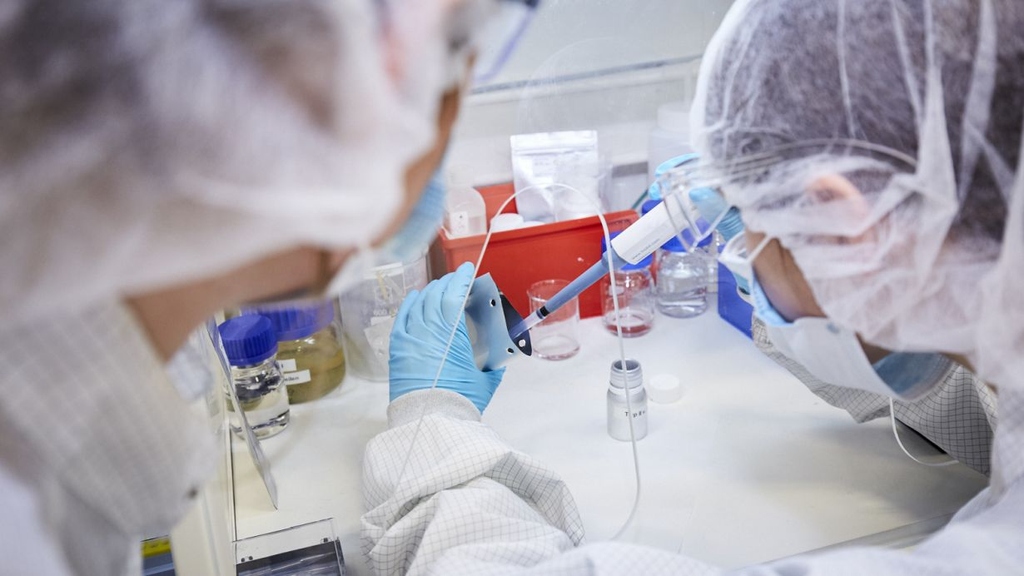
How can an app recognise your emotions? How does a potato become a battery? How do you capture the sun? And what does a product developer, materials researcher or civil engineer actually do? On Girls Day 2025, Thursday, April 3, girls will find answers to these and other questions, as well as information on suitable courses of study and apprenticeships, at the North and South Campus of the Karlsruhe Institute of Technology (KIT). Girls from the 5th class of all types of schools can inform themselves about jobs and tasks in STEM subjects at KIT.
Read Article
Smart interconnection and control of devices, direct recycling of battery electrodes, and sustainable cooling and heating – at Hannover Messe 2025 from March 31 to April 4, Karlsruhe Institute of Technology (KIT) will present solutions for a number of challenges at Future Hub (Hall 2, Stand B35), Energy Solutions (Hall 13, Stand C76), and at other stands. Moreover, promising startups will showcase their work and the commitment of KIT’s students will be highlighted.
Read Article
The European Commission has approved the proposal submitted by Eucor – The European Campus for a new international training program for doctoral candidates in quantum science and technologies. Gen-Q will enable 51 young scientists to complete their doctorate with an international, interdisciplinary, and intersectoral focus. Eleven of them conduct research at Karlsruhe Institute of Technology (KIT). The program is scheduled for a duration of five years and has a total budget of more than EUR 12 million.
Read Article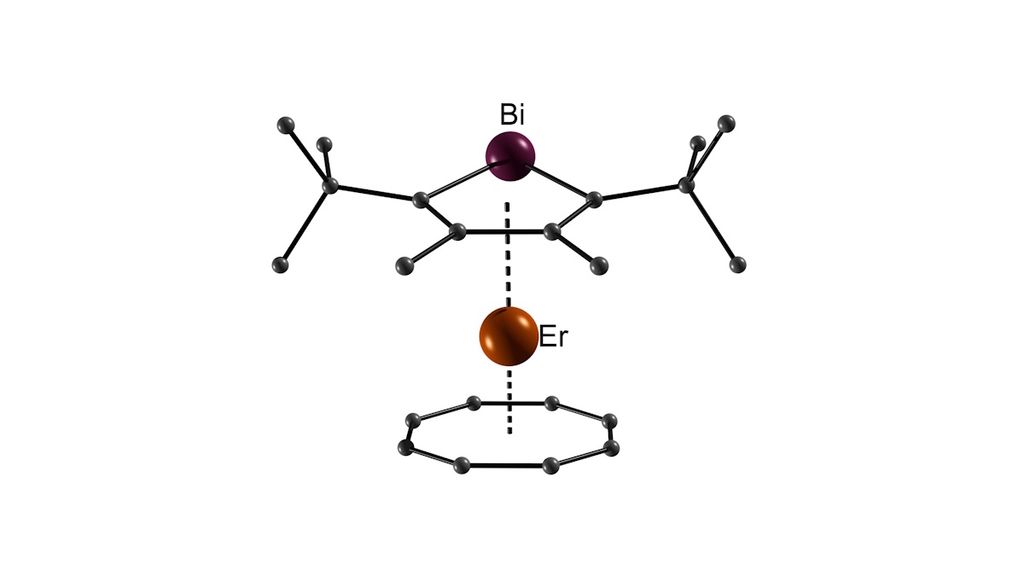
Quanteninformationstechnologien sind Innovationen in der modernen Datenspeicherung und -verarbeitung, die auf Quanteneffekten basieren. Materialien, die sich für solche Anwendungen eignen, müssen unter anderem bestimmte magnetische Eigenschaften aufweisen. Forschende am Karlsruher Institut für Technologie (KIT) haben nun gemeinsam mit Partnern im Fachjournal Nature Communications neue chemische Verbindungen vorgestellt, die diese Voraussetzungen erfüllen.
Read Article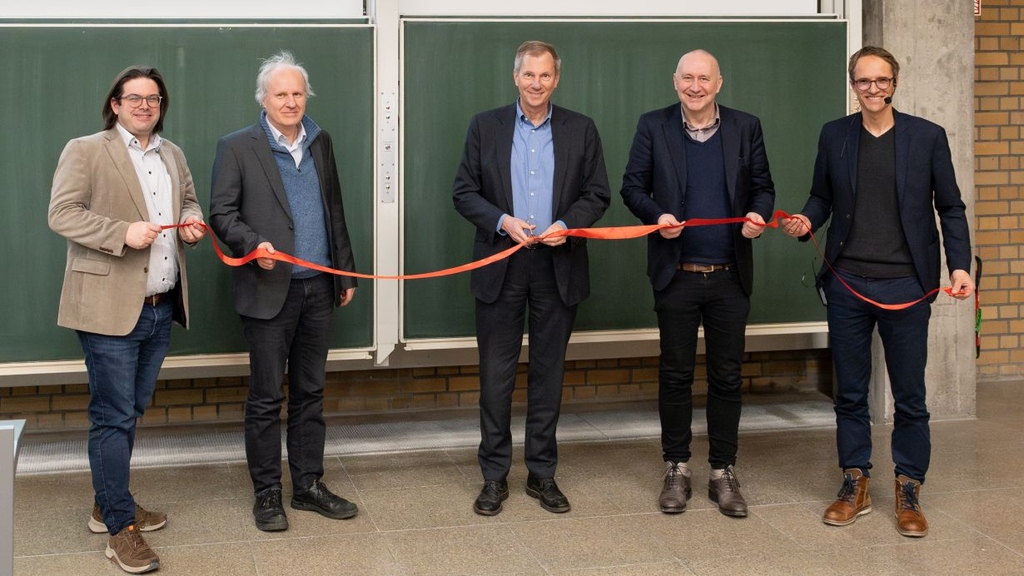
In a networked society, secure communication is essential. Quantum physics delivers the necessary foundation by allowing practicable technologies such as quantum key distribution. With the new fiber optic test facility at the Karlsruhe Institute of Technology (KIT), which opened on January 22, 2025, researchers aim to transmit, test and refine quantum keys. They also plan to set up a quantum network to link quantum computers.
Read Article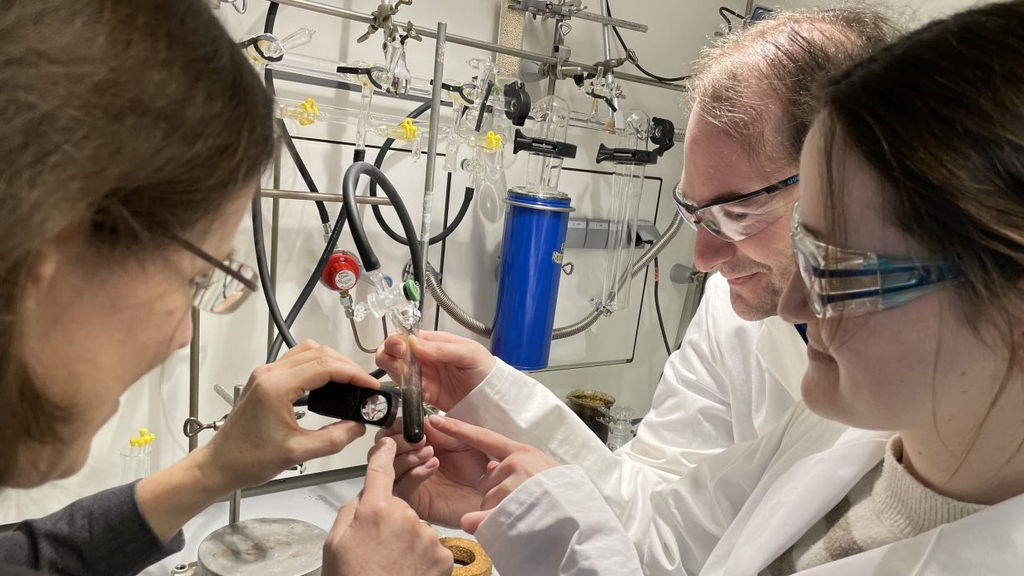
Researchers at the Karlsruhe Institute of Technology (KIT) have synthesized a Bi5--ring, a molecule with five bismuth atoms, and stabilized it in a metal complex. Their discovery fills a gap in chemical knowledge and enables future applications in materials research, catalysis, and electronics.
Read Article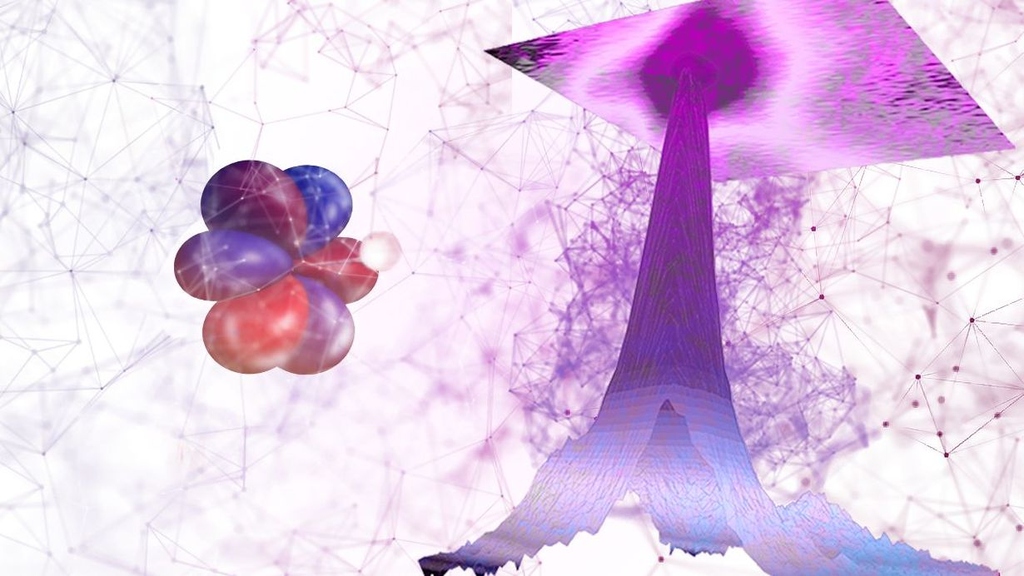
An international team of researchers at the Karlsruhe Institute of Technology (KIT) has developed a new method for analyzing actinides. The method provides unique insights into the electronic structures and bonding properties of these heavy, radioactive elements in the bottom row of the periodic table. It could help in the development of improved radiotherapeutic products and contribute to a deeper understanding of the behaviour of actinide compounds in the environment and in nuclear waste disposal.
Read Article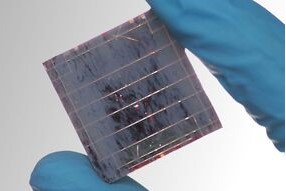
A revolution in solar cell technology
link
